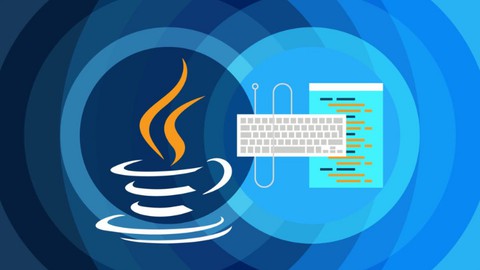
JSP – Java Full Stack
JSP – Java Full Stack, available at $19.99, has an average rating of 3.35, with 18 lectures, based on 42 reviews, and has 4437 subscribers.
You will learn about Introduction to JSP JSP Environment Setup Getting familiar with JSP First JSP Implicit objects, scripting and standard actions! Directives and sessions Database connectivity Forms Processing This course is ideal for individuals who are For web developers and programmers to increase their performance. It is particularly useful for For web developers and programmers to increase their performance.
Enroll now: JSP – Java Full Stack
Summary
Title: JSP – Java Full Stack
Price: $19.99
Average Rating: 3.35
Number of Lectures: 18
Number of Published Lectures: 18
Number of Curriculum Items: 18
Number of Published Curriculum Objects: 18
Original Price: $19.99
Quality Status: approved
Status: Live
What You Will Learn
- Introduction to JSP
- JSP Environment Setup
- Getting familiar with JSP
- First JSP
- Implicit objects, scripting and standard actions!
- Directives and sessions
- Database connectivity
- Forms Processing
Who Should Attend
- For web developers and programmers to increase their performance.
Target Audiences
- For web developers and programmers to increase their performance.
Jakarta Server Pages (JSP; formerly JavaServer Pages) is a collection of technologies that helps software developers create dynamically generated web pages based on HTML, XML, SOAP, or other document types. Released in 1999 by Sun Microsystems,[1] JSP is similar to PHP and ASP, but uses the Java programming language.
To deploy and run Jakarta Server Pages, a compatible web server with a servlet container, such as Apache Tomcat or Jetty, is required.
Architecturally, JSP may be viewed as a high-level abstraction of Java servlets. JSPs are translated into servlets at runtime, therefore JSP is a Servlet; each JSP servlet is cached and re-used until the original JSP is modified.
Jakarta Server Pages can be used independently or as the view component of a server-side model–view–controller design, normally with JavaBeans as the model and Java servlets (or a framework such as Apache Struts) as the controller. This is a type of Model 2 architecture.
JSP allows Java code and certain predefined actions to be interleaved with static web markup content, such as HTML. The resulting page is compiled and executed on the server to deliver a document. The compiled pages, as well as any dependent Java libraries, contain Java bytecode rather than machine code. Like any other .jar or Java program, code must be executed within a Java virtual machine (JVM) that interacts with the server’s host operating system to provide an abstract, platform-neutral environment.
JSPs are usually used to deliver HTML and XML documents, but through the use of OutputStream, they can deliver other types of data as well.
The Web container creates JSP implicit objects like request, response, session, application, config, page, pageContext, out and exception. JSP Engine creates these objects during translation phase.
Course Curriculum
Chapter 1: JSP
Lecture 1: Introduction to JSP
Lecture 2: JSP Environment Setup – 1
Lecture 3: JSP Environment Setup – 2
Lecture 4: Getting familiar with JSP
Lecture 5: Your First JSP
Lecture 6: Implicit objects
Lecture 7: Scripting
Lecture 8: Standard Actions – 1
Lecture 9: Standard Actions – 2
Lecture 10: Standard Actions – 3
Lecture 11: Directives – 1
Lecture 12: Directives – 2
Lecture 13: Sessions – 1
Lecture 14: Sessions – 2
Lecture 15: Databae Connectivity – 1
Lecture 16: Databae Connectivity – 2
Lecture 17: Forms Processing – 1
Lecture 18: Forms Processing – 2
Instructors
-
DIGIFLAX E-LEARNING
"Be Skillionaire"
Rating Distribution
- 1 stars: 4 votes
- 2 stars: 1 votes
- 3 stars: 9 votes
- 4 stars: 16 votes
- 5 stars: 12 votes
Frequently Asked Questions
How long do I have access to the course materials?
You can view and review the lecture materials indefinitely, like an on-demand channel.
Can I take my courses with me wherever I go?
Definitely! If you have an internet connection, courses on Udemy are available on any device at any time. If you don’t have an internet connection, some instructors also let their students download course lectures. That’s up to the instructor though, so make sure you get on their good side!
You may also like
- Best Yoga Instruction Courses to Learn in March 2025
- Best Stress Management Courses to Learn in March 2025
- Best Mindfulness Meditation Courses to Learn in March 2025
- Best Life Coaching Courses to Learn in March 2025
- Best Career Development Courses to Learn in March 2025
- Best Relationship Building Courses to Learn in March 2025
- Best Parenting Skills Courses to Learn in March 2025
- Best Home Improvement Courses to Learn in March 2025
- Best Gardening Courses to Learn in March 2025
- Best Sewing And Knitting Courses to Learn in March 2025
- Best Interior Design Courses to Learn in March 2025
- Best Writing Courses Courses to Learn in March 2025
- Best Storytelling Courses to Learn in March 2025
- Best Creativity Workshops Courses to Learn in March 2025
- Best Resilience Training Courses to Learn in March 2025
- Best Emotional Intelligence Courses to Learn in March 2025
- Best Time Management Courses to Learn in March 2025
- Best Remote Work Strategies Courses to Learn in March 2025
- Best Freelancing Courses to Learn in March 2025
- Best E-commerce Strategies Courses to Learn in March 2025






















